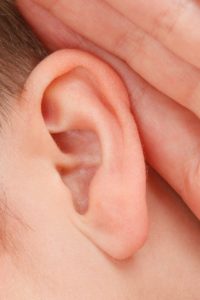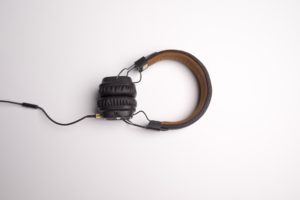May is Better Hearing and Speech Month!

A Spotlight on Hearing Health and Hearing Loss
Many speech pathologists know that May is Better Hearing and Speech Month. BHSM was started by ASHA in 1927 to raise awareness of hearing health as well as communication disorders. So, what exactly is hearing health?
First, a brief review of the anatomy and physiology of hearing: the inner ear is filled with tiny hair cells that detect sounds and transmit signals to the brain. The body has a fixed number of these hair cells (around 16,000). When the hair cells are exposed to a loud noise for short periods of time, they become fatigued, which may cause a temporary hearing loss or ringing in the ears (called tinnitus). Regular and/or prolonged exposure does not provide the opportunity for these cells to recover and can cause permanent damage and hearing loss. High-frequency sounds are impacted first, and continued exposure will continue to affect lower frequencies. Interestingly, in addition the actual damage to hair cells in the ear, exposure to loud noises can also increase overall fatigue, decrease one’s ability to focus or pay attention, and reduce short term memory.

Hearing health or “safe listening” means being aware of sources of excess noise and how we can protect our ears and our hearing in these situations. To understand excess noise, let’s start with how noise is measured. Sound intensity is measured in decibels (dB); specifically, A-weighted decibels (dBA) are based on sounds that human ears can hear. “Safe listening” depends on three factors: intensity, duration, and frequency. As any one of these factors increases, the others will decrease to stay within a “safe” level. For example, 85dB is considered the highest safe sound level for long durations, up to 8 hours. If the intensity is increased to 100dB, the duration to “safe listening” is no more than 15 minutes per day.
In the past 30 years, there has been an increase in the prevalence of hearing loss in teenagers (age 12-19) and nearly 15% of children experience some level of hearing loss. Some estimates indicate that over 1 billion young people are at risk for hearing loss due to unsafe listening habits.
Where is all the noise coming from?
(All of these noise sources can reach well over 85 dBA, and in many cases over 100 dBA. Remember that intensity is safe for unprotected ears for no more than 15 minutes.)
- Personal audio devices paired with earphones and headphones (the max level on some earphones can reach 136 dBA, funneled directly into your ears!)
- Entertainment venues, such as movie theatres, bars, clubs, live concerts, and sporting events
- Machinery including lawnmowers, motorcycles, airplanes, and sirens on emergency vehicles
- Children’s toys (yes, some electronic kids toys have been measured at over 100 dBA!)
As teachers and educators, we can help children learn about hearing health. We can incorporate these concepts into units on science, anatomy, the senses, and health. Here are some warning signs and tips for protecting your hearing. There are some great links and resources for parents, teachers, and kids to learn more about hearing health.
Warning signs of noise-induced hearing loss
Ringing in the ears (tinnitus)
Difficulty hearing high pitched sounds such as doorbells, telephones, or alarm clocks
Difficulty understanding speech, especially over the telephone
Difficulty following a conversation in a noisy environment
Hypersensitivity to certain sounds
Tips to protect your hearing
Wear earplugs for activities like mowing the lawn, attending a concert, or riding an airplane
Turn down the volume on your TV, computer, tablet, or headphones
Use noise cancelling earphones (this allows you to decrease the volume of your music while also blocking other outside sounds)
Be aware of safe listening levels
Limit time in noisy environments and/or take breaks from the noise
Awareness of warning signs of hearing loss
Get regular hearing screenings
Outside Resources:
https://www.cdc.gov/nceh/hearing_loss/infographic/
https://www.who.int/pbd/deafness/activities/MLS/en/
https://www.noisyplanet.nidcd.nih.gov/educators/tips-to-teach-kids







